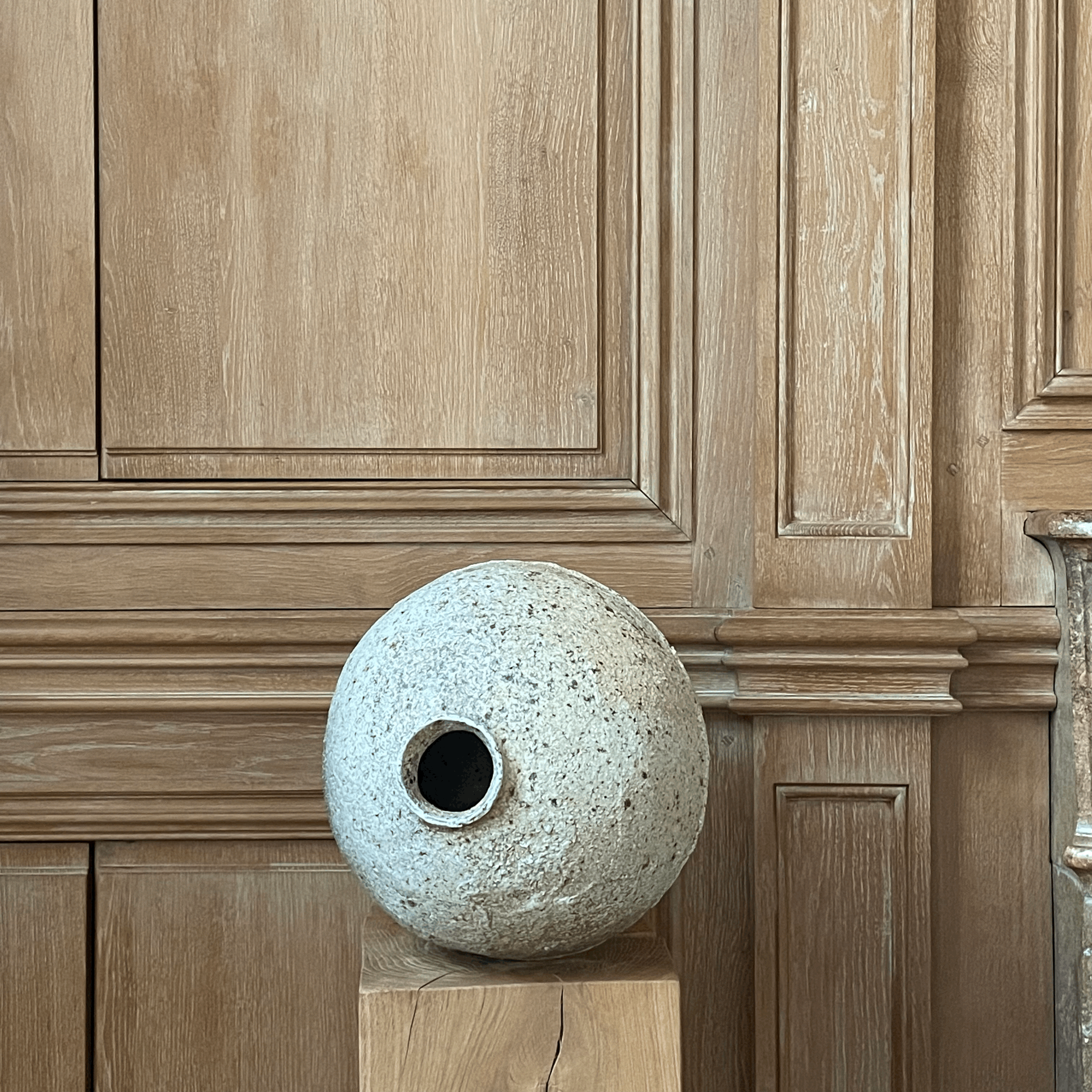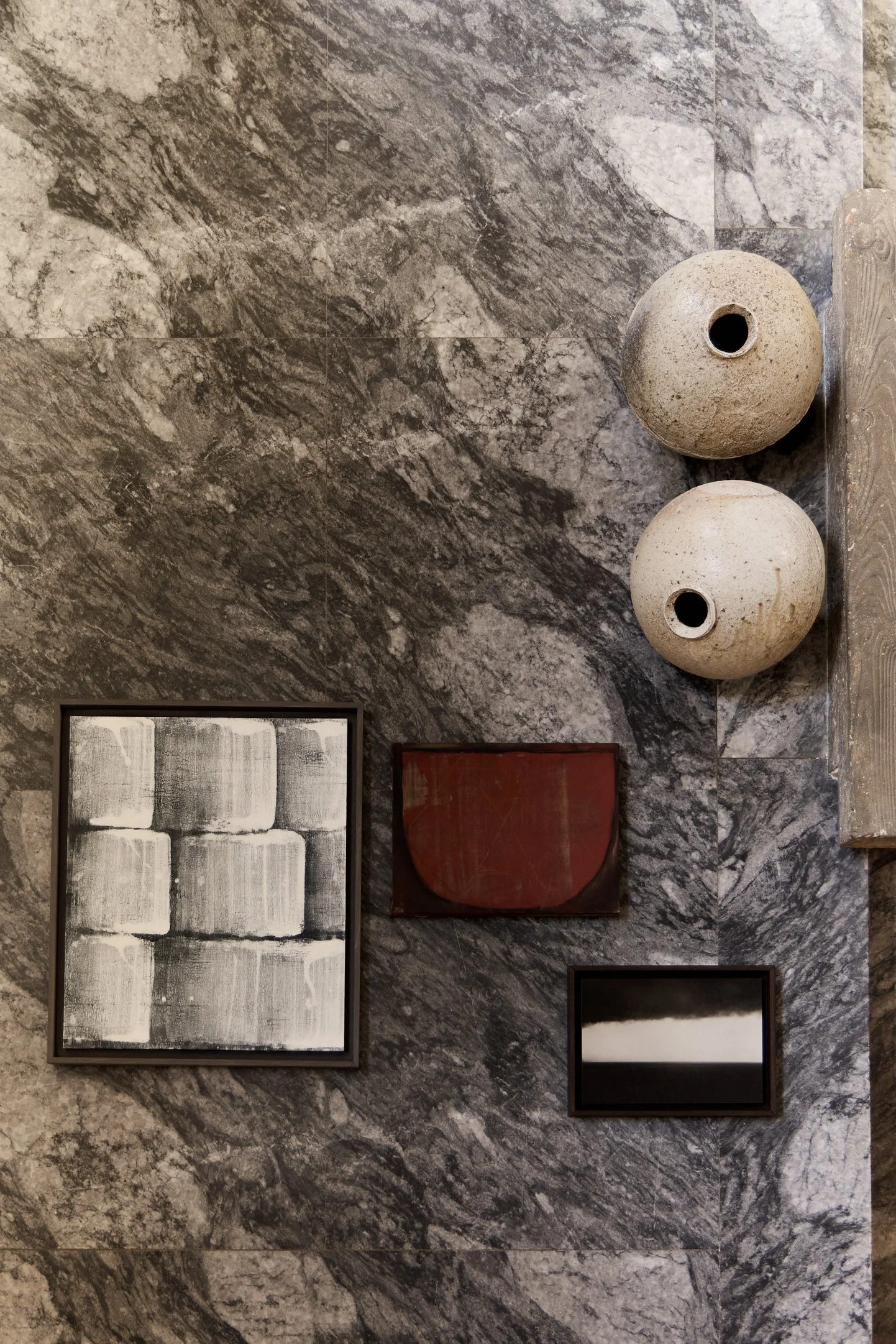Hippocampe, Atelier Perignem

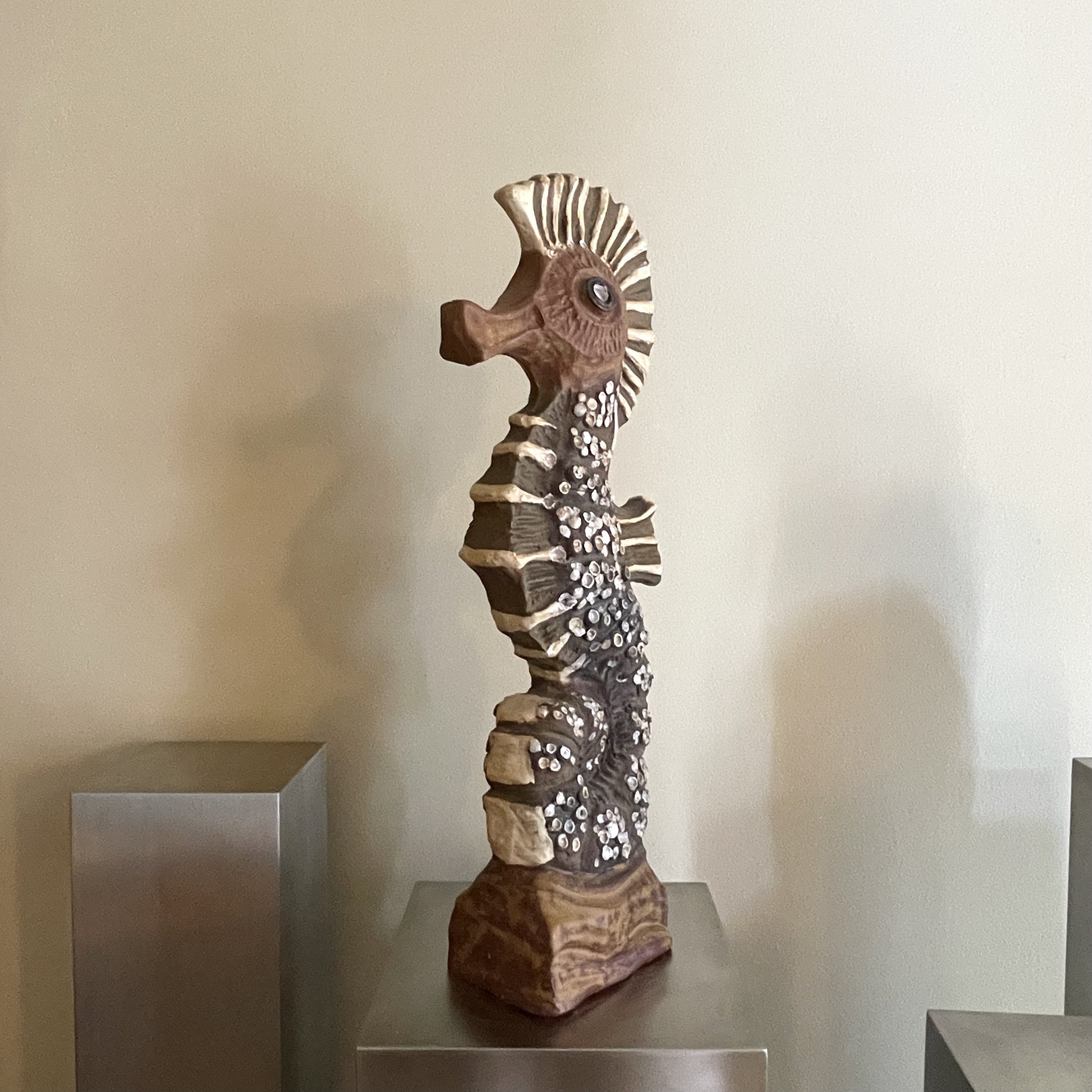
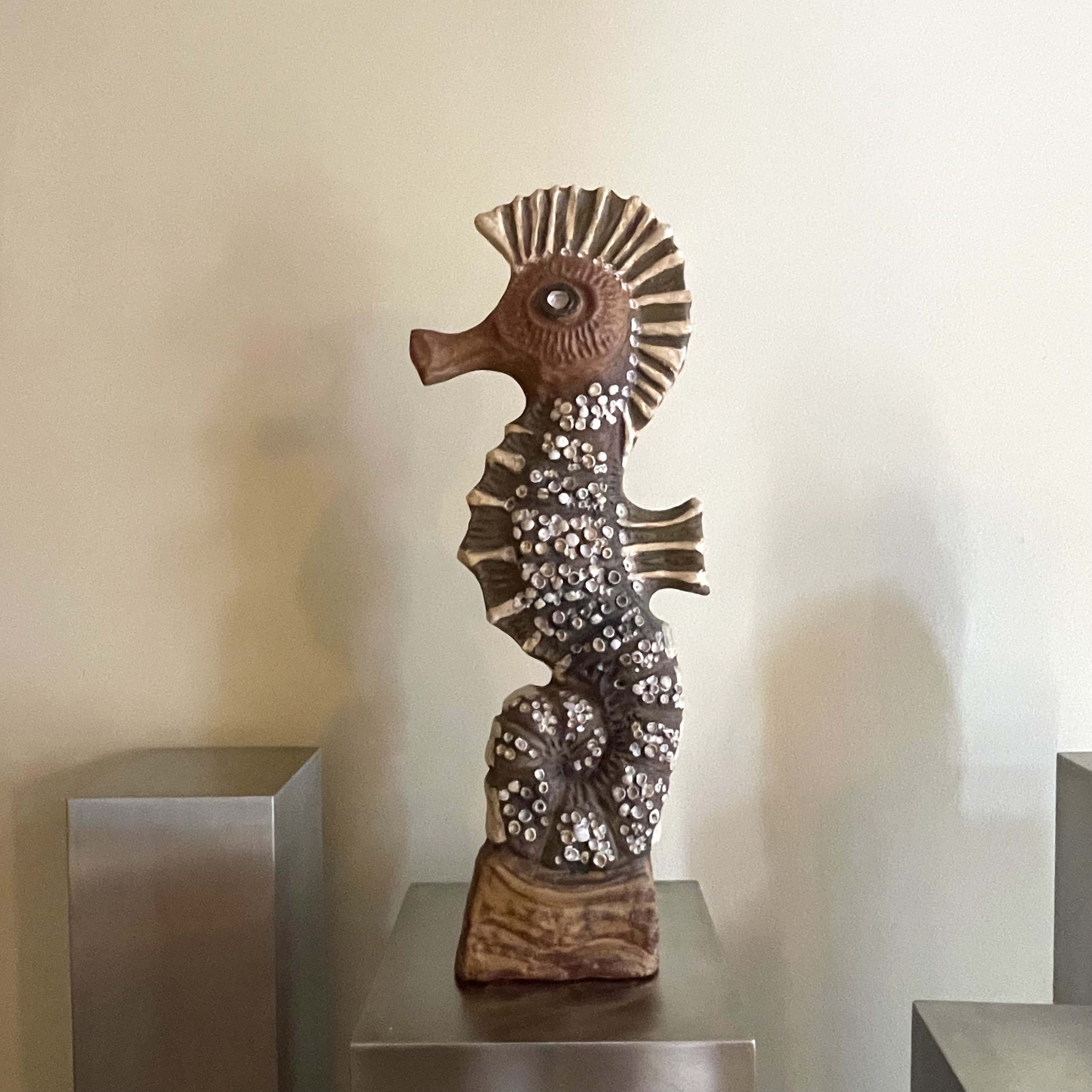

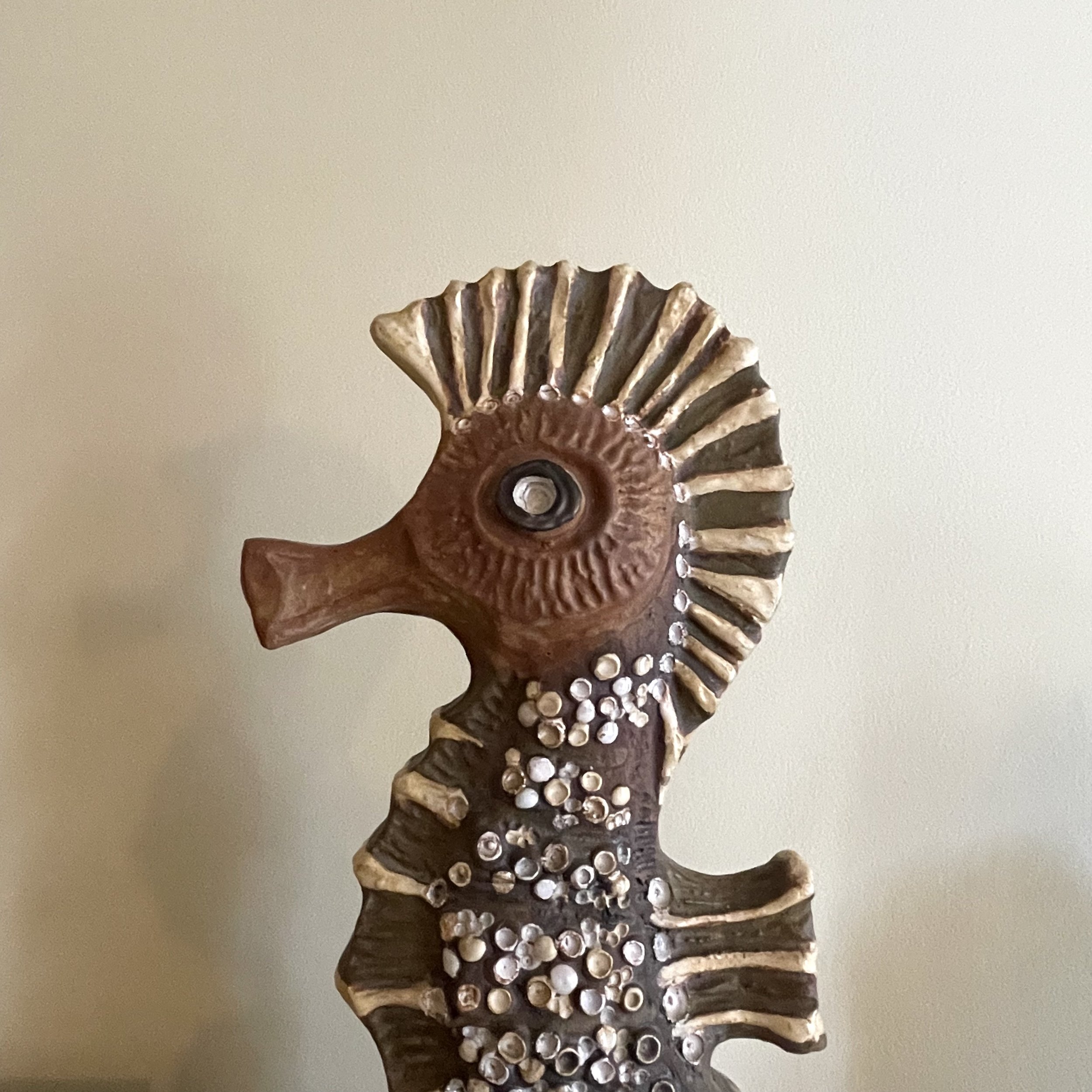
Hippocampe, Atelier Perignem
Hippocampe en terre cuite émaillée
Atelier Perignem
Circa 1960/70
H 57 cm
Très bon état général
Seahorse in glazed terracotta
Workshop Perignem
Circa 1960/70
H 57 cm
Very good condition
Cet hippocampe est un modèle rare en terre partiellement émaillé bien que réalisé dans une technique caractéristique de la production de l’atelier emblématique de l’école flamande. Il fut fondé par Rogier Vandeweghe et son frère Laurent en 1950 et désigné de ce nom Perignem, du latin par le feu. Elisabeth, l’épouse de Rogier se joint bientôt à eux ansi qu’Yves Rhayé qui enrichit le répertoire de formes organiques.
La technique pratiquée à l’atelier met en tension des formes moulées retravaillées ensuite avec des outils de grattage et des émaillages laissant de la place aux réserves et aux contrastes entre surface mates, satin et brillant.
les terres sont rouges ou noires principalement à petite chamotte et les cuissons oxydantes peuvent les teinter jusqu’au noir de jais tandis que la palette est très resserrée et sombre des brun-rouge aux bleu-noir.
Leur répertoire de formes est partagé entre le bestiaire naturaliste ou fantastique, la réalisation de vases de formes libres, des plats muraux à décors géométriques, enfin, une partie de la production est à caractère religieux en particulier des bas reliefs.
Bientôt, l’atelier Perignem est suivi de l’ouverture d’un atelier voisin qui signe la fin d’une période d’association. Son fondateur n’est autre que Rogier Vandeweghe, il le nomme Amphora.
Merci @atelierperignem d’avoir confirmé l’authenticité de cette pièce produite dans les années 60.
This seahorse is a rare model in partially enamelled clay, although it is made in a technique characteristic of the production of the emblematic workshop of the Flemish school. It was founded by Rogier Vandeweghe and his brother Laurent in 1950 and named Perignem, from the Latin for fire. Rogier's wife Elisabeth soon joined them, as did Yves Rhayé who enriched the repertoire with organic forms.
The technique practiced in the studio puts in tension molded forms reworked later with scraping tools and enameling leaving room for reserves and contrasts between matte, satin and glossy surfaces.
The earthenware is red or black, mainly with small grog, and oxidizing firings can tint them to jet black, while the palette is very narrow and dark, from reddish-brown to blue-black.
Their repertoire of forms is divided between naturalist or fantastic bestiary, the realization of vases of free forms, wall dishes with geometrical decorations, finally, a part of the production is of religious character in particular low reliefs.
Soon, the Perignem workshop was followed by the opening of a neighboring workshop, which marked the end of a period of association. Its founder is none other than Rogier Vandeweghe, he names it Amphora.
Thank you @atelierperignem for confirming the authenticity of this piece produced in the 60s.







